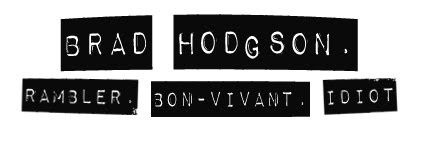Tomorrow's activity is entitled the 'Seminar / Exhibition' of objects, and whilst not entirely sure of what my object should be due to my absence, I have plumped for a book containing a retrospective of one of my favourite designers Storm Thorgerson, whose work has constantly sprung to mind each time I envisage the route I want to go down for the 'Exhibit / Show' brief.

I have been a huge fan of Storms work since i was 12 years old when I purchased Audioslave's debut album which featured his artwork.
An aspect of Storms work I find sets him apart from most artists is that his workload is almost entirely commissioned, with artists and bands being the creative people they are they often find it hard to let go of something so precious to them so they often collaborate with Storm by giving him themes or stories of what the album cover should tell.

From the days of epic gatefold sleve's where his vast artwork would sprawl across the large cardboard canvas, through the smaller jewelled surrounding of a CD case and now into the almost microscopic world of MP3, Thorgerson has managed to keep his work fresh through what he calls his 'straightforward' approach of just creating what the artist or the music requires.
Below is the first image of Storms i ever knowingly saw, I have since discovered many covers I have admired are in fact Storm's and I am often astonished by his prolific continuity and high standard, whilst also his experimental freshness and the feeling that your never quite sure what's to come next.
His go to man in terms of photography is the renowned Peter Curzon, who combined with the artistic vision of Thorgerson has captures some of the most captivating images to grace
His choice of medium is also an interesting topic:
"I like photography because it is a reality medium, unlike drawing which is unreal. I like to mess with reality...to bend reality.
Some of my works beg the question of is it real or not?
It is quite astonishing to learn when looking at Storm's vast back catalogue that their is 9/10 minimum/no photoshop used to create the image, and even when it is it is not used to alter the image too drastically. He is so dedicated to his art that each image can take months to create due to his perfectionistic manner requiring the specific lighting or weather conditions, resulting in his teams astounding images.
An obvious influence on Thorgersons work is Surrealism, either down to the works he is designing for, e.g Pink Floyds surreal 'Prog' Rock required an equally 'out there' cover to complement it's soundscape, or down to his artistic taste. Comparisons to Dali, in particularly his painting "The Pesistance of Memory' can be seen in many of his covers.
Thorgerson has unique grasp of the elements he wants to portray within his work and knows exactly which to execute to create the right mood, often encorporating fire to counteract his continued use of water.
So revered is Thorgersons work, that he often collaborates with artists across a series of albums, most recently he has become synonamous with the output of both Biffy Clyro and The Mars Volta, his most notable work of course though can be seen on the majority of Pink Floyds releases since his first cover for them - Dark Side of the Moon, when he was part of the Hipgnosis desgign studio.
his thematic use of the elements
Thorgerson has an ability to perfectly execute his covers s that everything within the shot is set up just the way it should b, without a single element out of place or left to chance, giving the impression that he must be a hard taskmaster to work with, but a true auteur at the same time.
It is Storm's grasp of the environment and the ethos that everything in the image was intended that I feel will work strongly in my work, but it will require me to adopt his strict uncompromising manner if I even dream of creating works of his standard.


























































